This page was created to help users remove the Addonup.com virus and explain what it is. You will have a hard time getting rid of it without our assistance. Most of the time this hijacker infects you through and extension that promotes it. You will have to look and determine which one is the culprit in your settings/extensions tab.
The instructions below work; if they don’t for you – you missed something.

Addonup Removal Guide
The guide on this page takes a while to complete, so if there’s a chance to remove Addonup using simpler steps, it’s worth the shot. These may not always work, but if they do, you’ll be saving yourself a bunch of time:
- Open your browser, access the menu, and navigate to the Extensions section.
- Locate the Addonup extension or any other sketchy browser add-ons that may be linked to it.
- If the Remove button is available and seems active, click it to uninstall the extension.
- Next, return to the menu, select Settings, find the Search Engine tab, and choose a trusted search engine.

Now restart the browser to see if Addonup has been eliminated. If the hijacker persists, and it probably will, or if you weren’t even able to perform these steps, proceed to the advanced methods we’ve provided next.
SUMMARY:
IMPORTANT: READ BEFORE PROCEEDING
Hijackers like Addonup will often be bundled with other unwanted or even malicious software which can cause the hijacker to reappear even after removal. Our guidance can only cover removing Addonup itself, but won’t help against any rogue apps present in your system.
To get rid of any other rogue software, consider using a reputable malware removal tool such as SpyHunter. It excels at detecting and eliminating associated threats and will quickly identify and weed out any problematic software that might cause Addonup to return.
How to Get Rid of Addonup
If the quick steps above didn’t help, it’s probably because the hijacker has added a custom policy to the affected browser, which is preventing you from eliminating Addonup. A message like “Managed by your organization” in the browser indicates the existence of such a policy, the removal of which should be the first step of the removal process:
Start by accessing your browser and visiting one of the following URLs depending on what browser you are using:
chrome://policyfor Chromeedge://policyfor Edgebrave://policyfor Brave
For other Chromium browsers, just modify the URL with their name.
The page you are taken to displays all policies currently active in your browser. Look for policy values that consist of random letters and numbers.
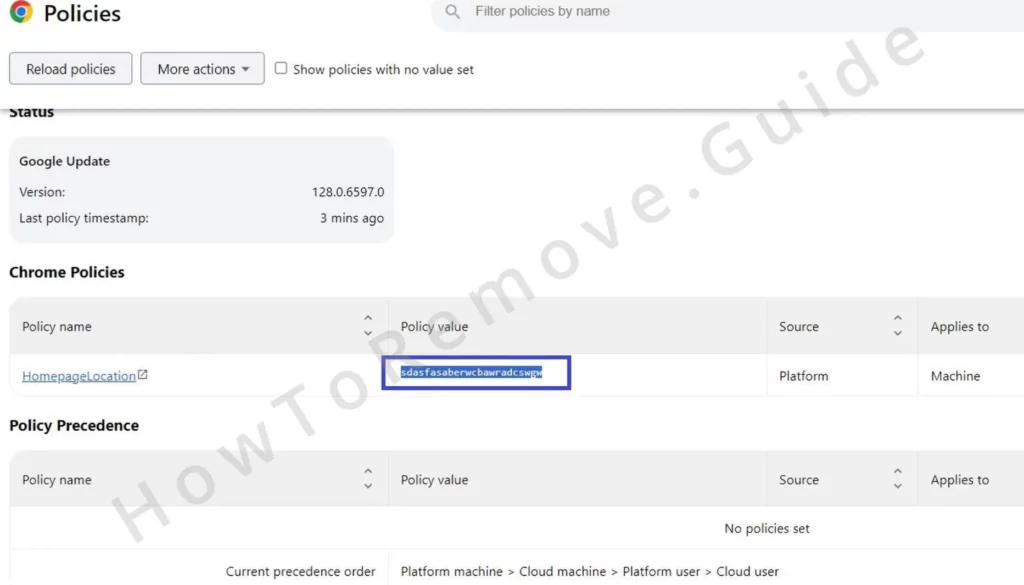
These are likely associated with the hijacker, so copy any suspicious entries into a text document, because you’ll need them soon.
Now return to your browser’s Extensions Manager through the main menu. If the hijacker prevents you from doing that by redirecting you (usually to Google.com), do this:
Go to one of the following folders depending on the browser you are trying to clean:
- Google Chrome:
C:\Users\[Your Username]\AppData\Local\Google\Chrome\User Data\Default\Extensions - Microsoft Edge:
C:\Users\[Your Username]\AppData\Local\Microsoft\Edge\User Data\Default\Extensions - Opera:
C:\Users\[Your Username]\AppData\Roaming\Opera Software\Opera Stable\Default\Extensions - Brave:
C:\Users\[Your Username]\AppData\Local\Brave Software\Brave-Browser\User Data\Default\Extensions
The folders you find there contain data for the extensions in your browser. Delete all of them to be sure that the folder or folders of any rogue extensions are deleted.
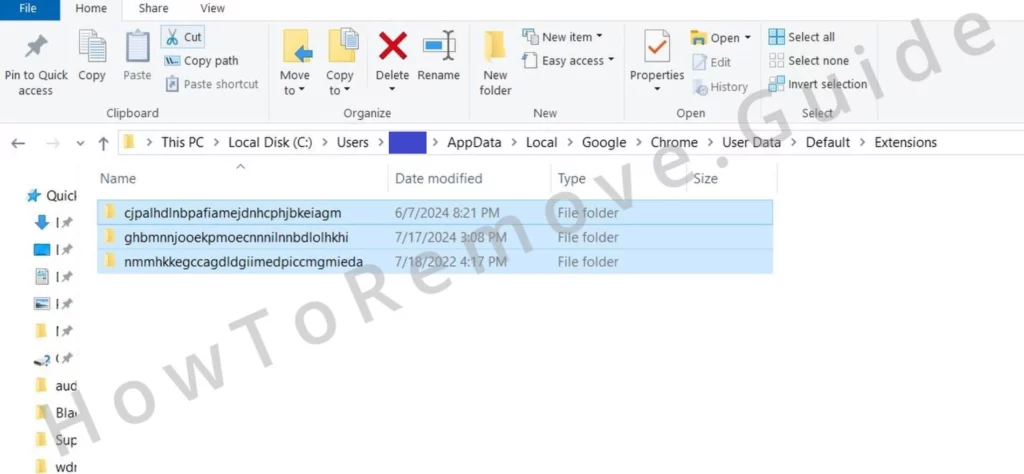
This action will corrupt any legitimate extensions in the browser too, but repairing them is done in a single click, so not a big deal.
After clearing these folders, return to the Extensions Manager and enable Developer Mode to reveal additional details about each extension. Note the IDs of any suspicious extensions and save them alongside the rogue policy values.

How to Delete the Addonup Virus From Your Registry
With the necessary information gathered, it’s time to eliminate the rogue policies that are hiding in your system.
Start by opening the Start Menu and searching for “Registry Editor“. Right-click the first item, select “Run as Administrator“, and the Registry Editor will open.
Go to the Edit menu, click Find, then paste the first rogue policy value or extension ID into the search bar, and click Find Next.
Delete each identified registry key carefully – the registry keys are the folders in the left panel. Be sure to run an additional search after each deletion, because there can always be one more rogue item.
Once you’ve cleared all keys associated with a particular policy value or extension ID, move on to the next one and delete its entries as well.
Sometimes, a key can’t be deleted due to restricted access – a common persistence tactic employed by many hijackers.
The solution is to right-click the parent key of the one you must delete and select Permissions. Then go to Advanced > Change, type “everyone” in the text field, and click Check Names.
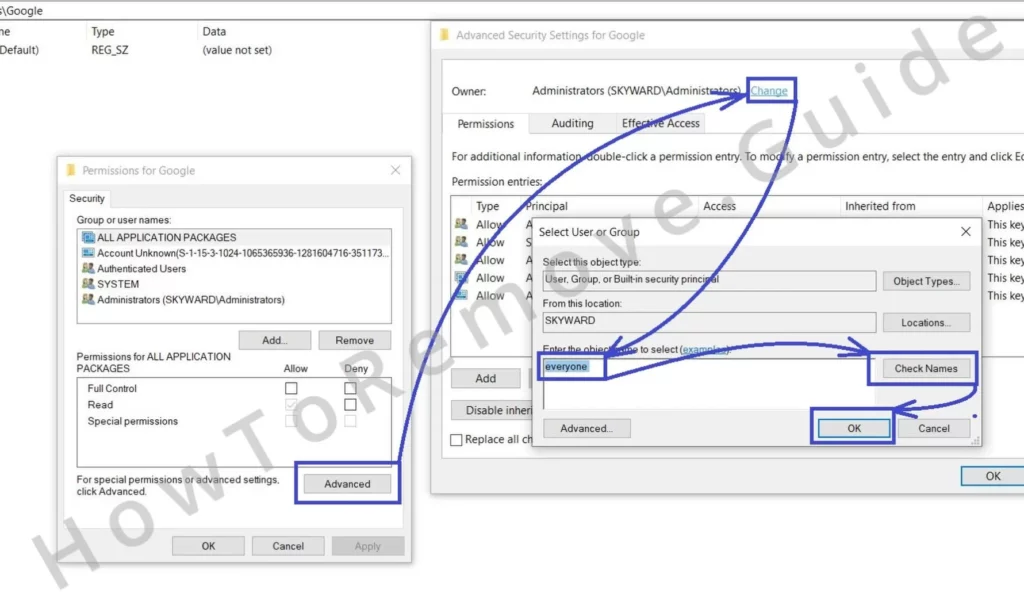
Click Apply, then OK, and check the two new Replace options in the previous window. Then Apple > OK again and you’ll now be able to delete the rogue key.
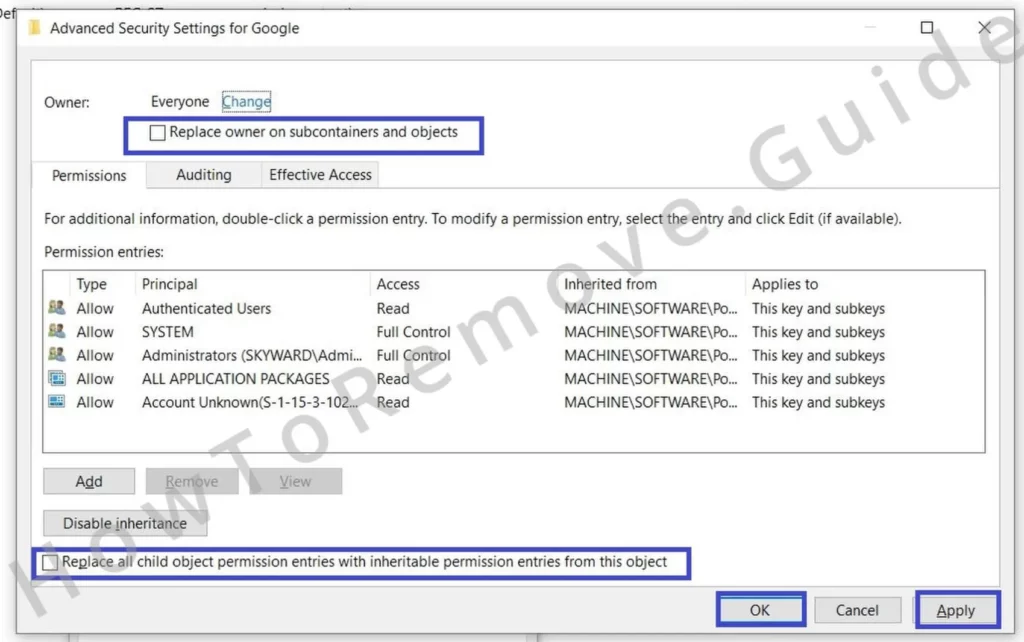
Get Rid of Addonup Malware Policies: Alternative Methods
We can offer two additional ways to clear any remaining rogue policies:
For the first one, you must use the Start Menu to search for the Group Policy Editor and then open it.
Right-click on Administrative Templates, click the Add/Remove Templates option, and remove all entries you may find in the next window.
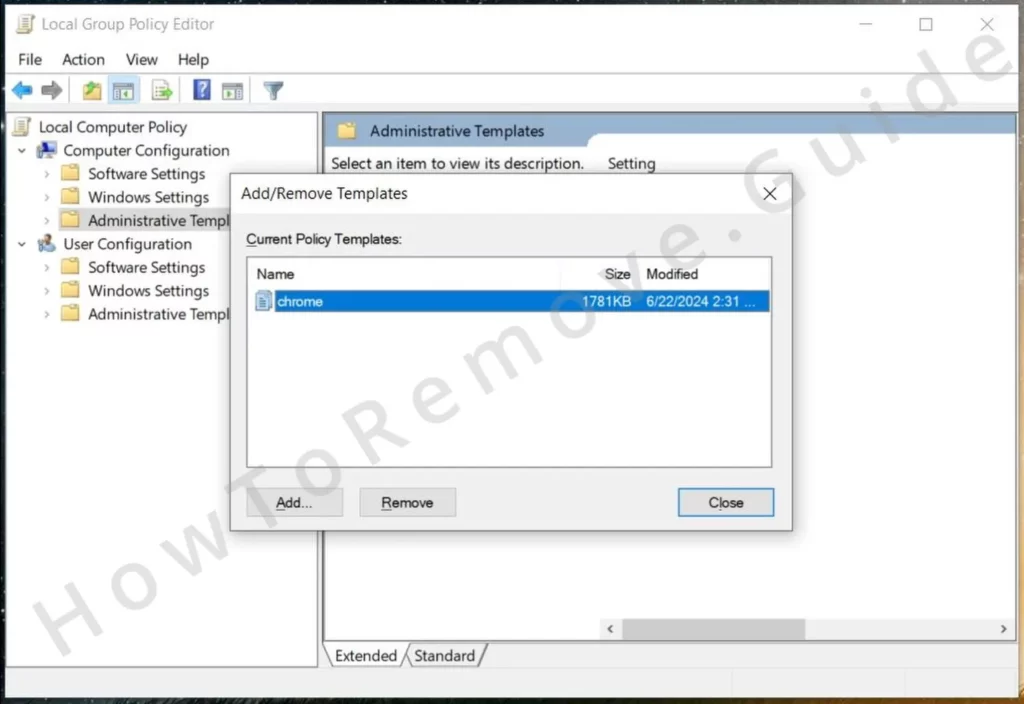
If you are using Chrome, we also recommend running the Chrome Policy Remover tool which is totally free. It automatically wipes out unwanted policies.
Just download it and run it and if Windows displays a security warning, just click More Info and proceed. Don’t worry, the tool is safe and can save you some hassle.
Uninstall Addonup From Chrome, Edge, and Other Browsers
The rogue policies should now be gone, which lets you finally address the unwanted changes made in your browser by the hijacker.
Return to the Extensions page, locate any rogue add-ons linked to Addonup, and click Remove.
Then navigate to Settings and open Privacy and Security. Click Delete browsing data and clear your data for a period that predates the hijacker’s arrival in your system.
Be sure to use the Advanced tab to clear all data types. Leave only your passwords untouched or you’ll have to re-enter them manually.
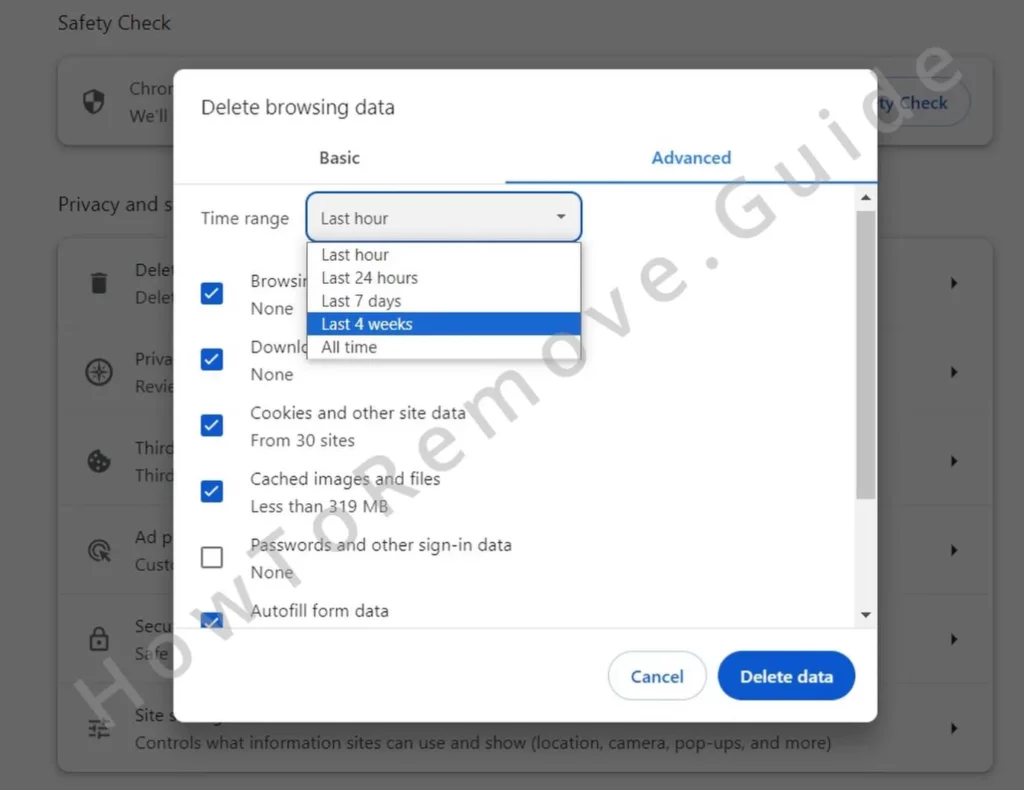
Also, check your Site Settings within Privacy and Security. Review each permission and remove any unfamiliar URLs listed under “Allow“. Better yet, if you see any sketchy sites there, add them to the list of Blocked addresses to ensure they don’t bother you again.
Also, go to the Search Engine tab, and there choose a reputable search engine tool as your browser’s default one. Then open Manage Search Engines to remove any questionable entries like maxask.com or boyu.com.tr that you may find there.

Lastly, we recommend checking the On Startup and Appearance tabs to ensure no rogue URLs are set to open when you launch your browser or open a new tab.
What is Addonup?
If you are reading this, you have probably opened your web browser just to notice that the familiar homepage is gone, replaced with an unfamiliar one, and the default search engine has been swapped. Aside from that, some unwanted Addonup ads have probably started to flood your screen, disrupting your online experience. The appearance of your browser might have changed, showcasing unfamiliar features or options and your attempts to visit usual sites might now automatically reroute you to unfamiliar web pages. All these anomalies are disturbing and might suggest your browser has been compromised by software like Addonup, in which case, immediate action is required.

Leave a Reply